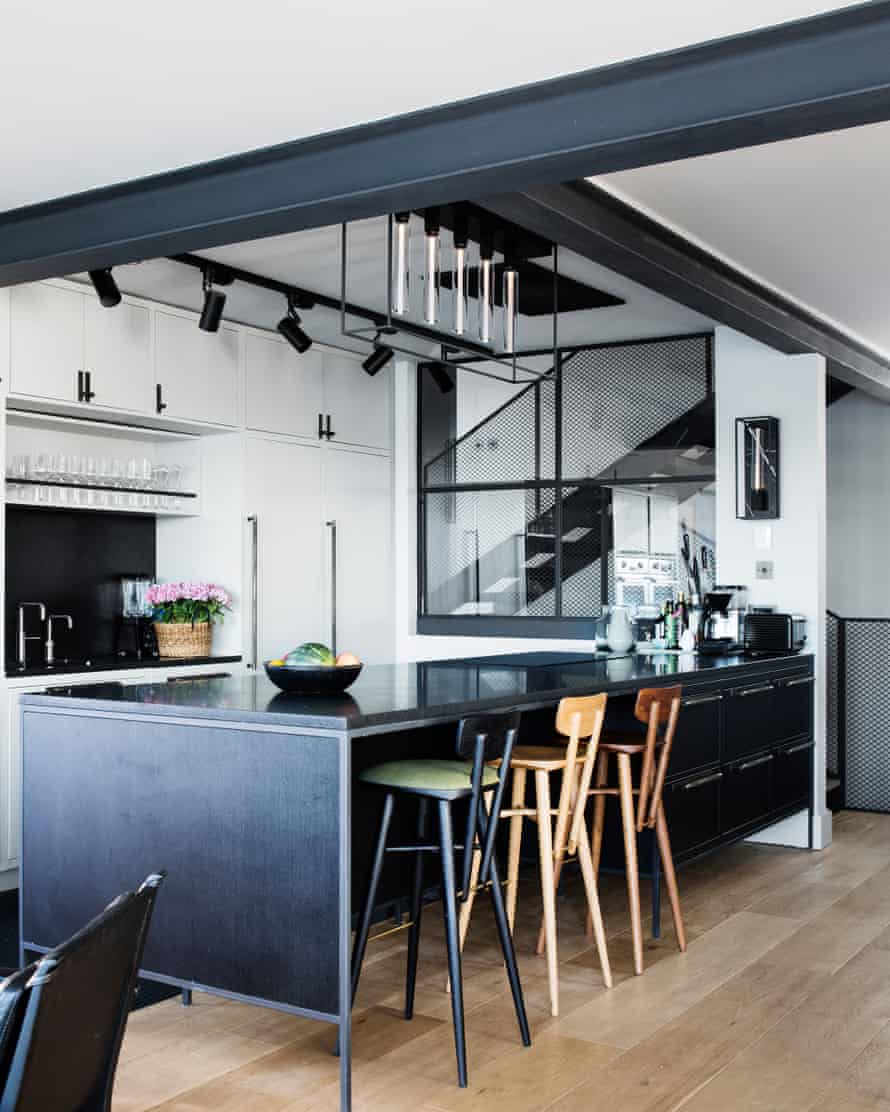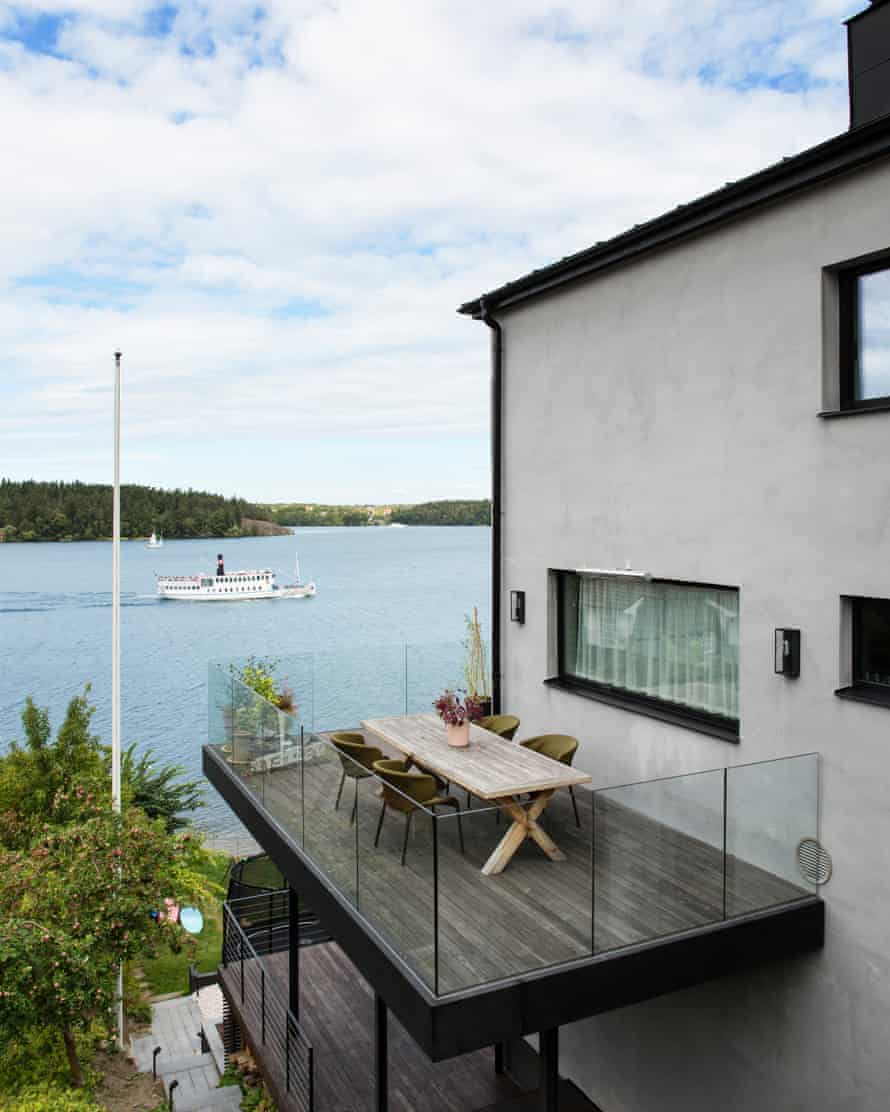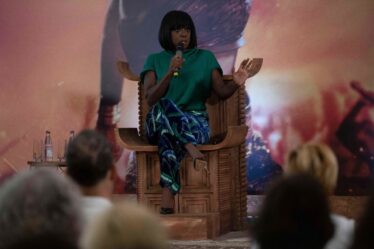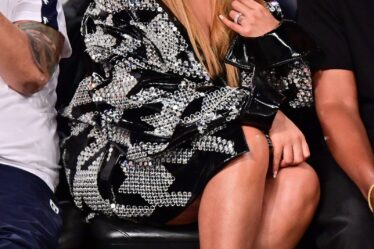
When Massimo Minale moved from the East End of London to Stockholm, he brought his industrial aesthetic with him. The architect and founder of hardware brand Buster & Punch would like to say that he has “softened” his style to suit the Scandi taste for natural textures and folkish weaves. But that would be an untruth. Everything in his lakeside family home – the swathes of steel or the glazed screens which light the open-plan spaces – reminds him of his first loft apartment.
Viewings for the house, set on Lake Mälaren (one Sweden’s largest expanses of fresh water), had finished by the time Minale and his wife, Jessica, turned up. So they bought it without stepping inside. The 1950s “white sugar cube” typified the Funkis style of architecture, Sweden’s answer to the Bauhaus. But it was in such a “crappy state” that they initially intended to knock it down and start from scratch. Because of its location, the planners vetoed the idea.
So they kept the facade and ripped out the interior, a sequence of “small, mouldy rooms where nothing made sense”, and started again inside. Tucked into a hillside, the house has a double-height sitting room with family bedrooms above. There is a spa lined in burnt teak, a gym and guest room in the basement. Balconies and new glazing bring dancing lake shadows inside. There are no doors. This felt like a “cool idea” before they had children. Now he admits it feels less cool.
Prams and trikes sit alongside Minale’s Harley-Davidsons behind the glass wall of the new garage. He has been collecting and restoring vintage motorbikes since his 20s, when the Cambridge graduate worked for Foster + Partners in London. “By day I was an architect. But I felt frustrated with the pace of things. It can take 10 years to realise a building. My mind works quickly. I like to have lots of things on the go.” So he chanelled his excess energy into restoring bikes and “making all sorts of things” – lights, furniture – from solid metal.

“As an architect I was asked to source the fittings for interiors. I realised that it was very hard to find interesting details like switches or handles. They always felt like an afterthought.”
The spark he needed came when he designed some cabinet knobs inspired by motorbike handles. Minale’s urban, rock’n’roll aesthetic (this is a designer who likes to paint his fingernails black) caught the imagination of one his earliest clients, Alexander McQueen. George Clooney commissioned a bar, and the Rolling Stones followed.
“Buster & Punch unites my two passions: architecture and making things,” he says. “I like the idea of taking something mundane and turning it into something unexpected. I want people to feel an emotional connection with them. That’s the magic.”

Inevitably, the house has become a test bed for ideas. He designed everything here himself: the beams, the stairgates, the exposed pipework and the lights which cascade from ceilings like modern jewellery. The staircase side, made of mesh – “cheap and effective” – is another quintessentially warehouse touch. The solid-steel kitchen is a prototype for a new range of free-standing, modular designs which homeowners will be able to pick up and transport from home to home.
“We’re all having to rethink the way we do things. I like the idea of people taking our handles or lights with them when they move. So why not the same for kitchens?” asks Minale, who also has plans for an electric car. “People try to pigeonhole us, but we’re always trying new things. Just because we do interiors doesn’t mean we can’t experiment.”

Design is in his DNA. His Italian father ran a successful design agency, Minale Tattersfield, in London. His mother and uncle were also graphic designers. A pinball machine and first-edition Eames chair have been in his family since he was two. Other pieces such as the sculptural bar stools designed by James Harrison and artworks by the South African Ryan Hewett and LA-based Seth Armstrong “are by friends and people I admire”.
The subdued paint palette is the one he also likes to use in his shops in Stockholm, London and LA. While researching the local architecture, Minale discovered that the “soft grey and off-black” combo is typical of 19th-century Swedish farmhouses. But this typically Scandinavian effect, he assures me, was “entirely unintentional”.



